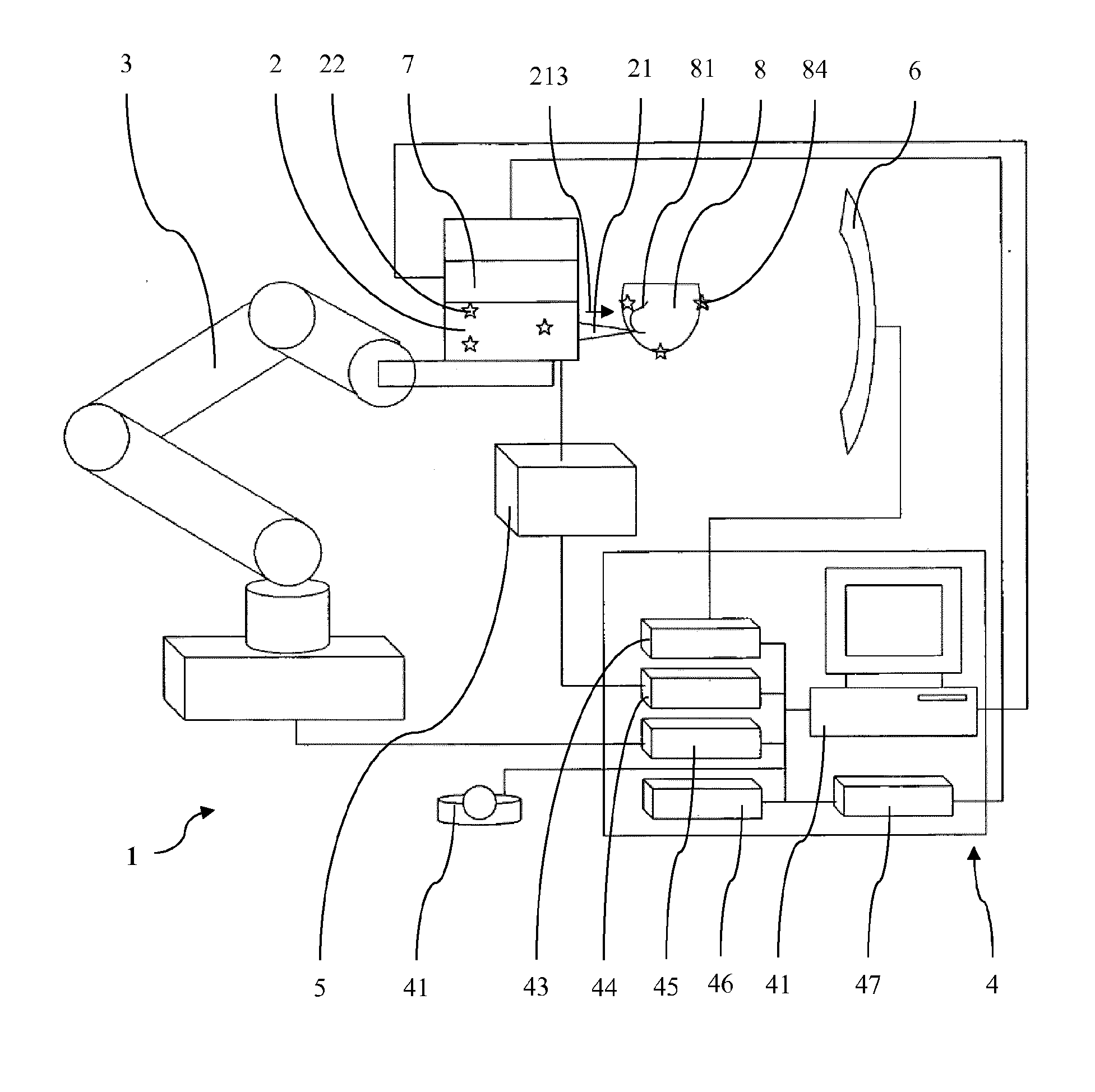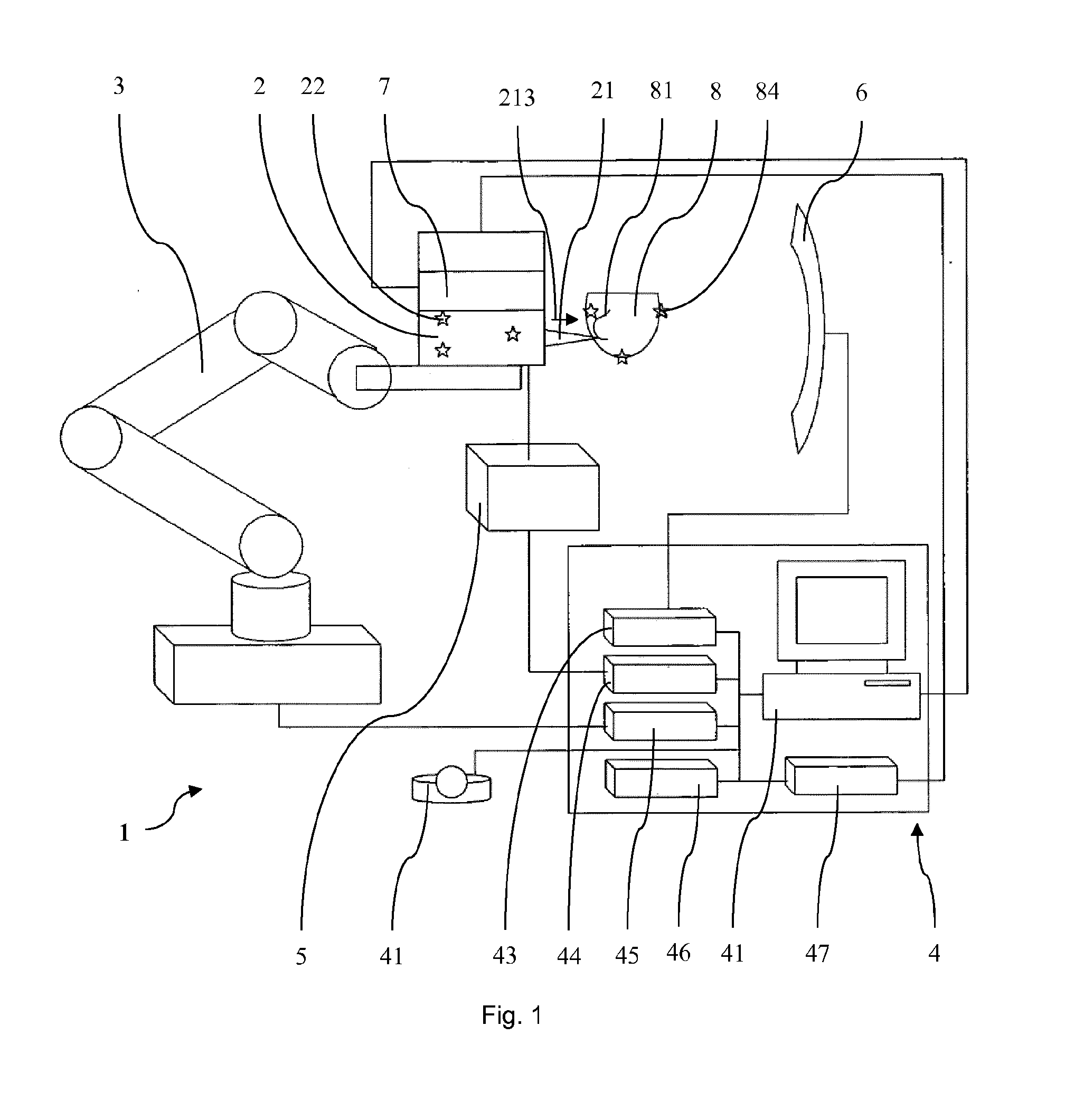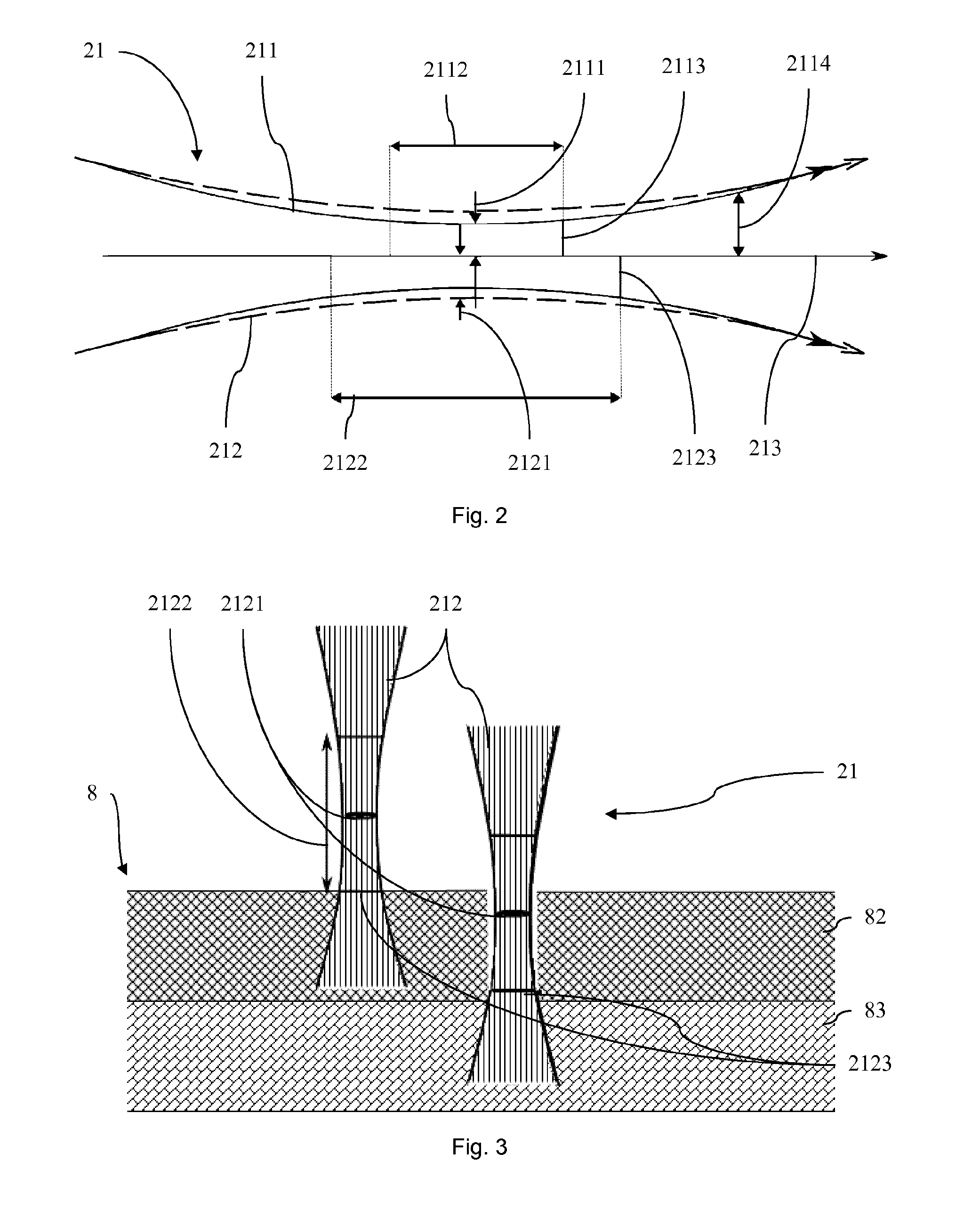Depth controlled photoablation of human or animal tissue
- Summary
- Abstract
- Description
- Claims
- Application Information
AI Technical Summary
Benefits of technology
Problems solved by technology
Method used
Image
Examples
Embodiment Construction
[0033]In the following description certain terms are used for reasons of convenience and are not to be interpreted as limiting. The terms “right”, “left”, “up” and “down” refer to directions in the figures. The terminology comprises the explicitly mentioned terms as well as their derivations and terms with a similar meaning.
[0034]FIG. 1 shows an embodiment of a photoablation device 1 according to the invention for depth controlled photoablation of a target bone tissue 8. The photoablation device 1 comprises a robot arm 3 as positioning device, an evacuation supply system 5, an auto-tracker 6 as position detector, a laser source 2, a microphone 7 as acoustic sensor and a controller unit 4 having a computer 41.
[0035]The laser source 2 is fixedly mounted to a platform provided at a free end of the robot arm 3. It is arranged to propagate a focused laser beam 21 into a direction of propagation 213 which, in FIG. 1, is from left to right. The laser source 2 is connected to a current adju...
PUM
 Login to View More
Login to View More Abstract
Description
Claims
Application Information
 Login to View More
Login to View More - R&D
- Intellectual Property
- Life Sciences
- Materials
- Tech Scout
- Unparalleled Data Quality
- Higher Quality Content
- 60% Fewer Hallucinations
Browse by: Latest US Patents, China's latest patents, Technical Efficacy Thesaurus, Application Domain, Technology Topic, Popular Technical Reports.
© 2025 PatSnap. All rights reserved.Legal|Privacy policy|Modern Slavery Act Transparency Statement|Sitemap|About US| Contact US: help@patsnap.com



